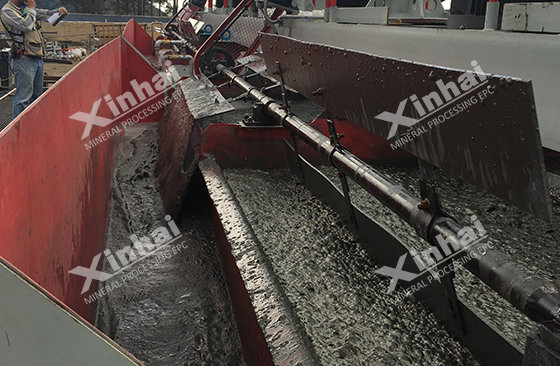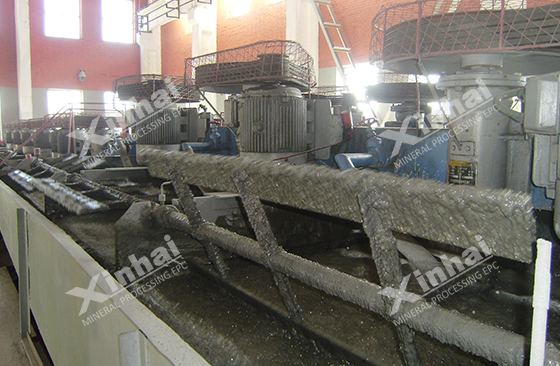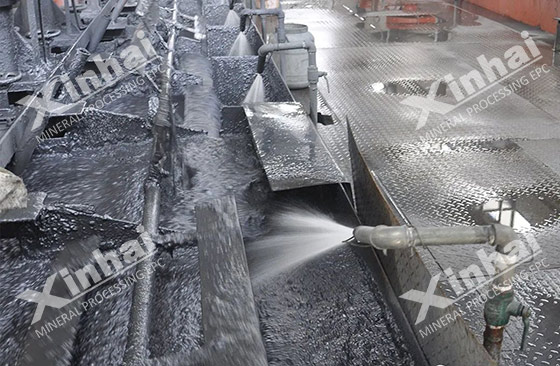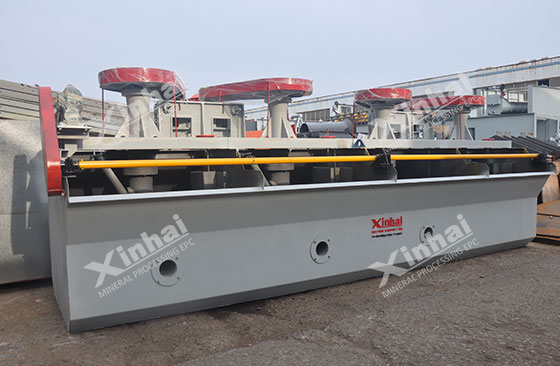
As one of the most common minerals in the earth's crust, quartz sand is widely used in glass, ceramics, metallurgy and other industries. However, natural quartz ores are usually accompanied by a large number of impurities. In order to improve the purity of quartz, it must be treated by flotation and other mineral processing processes. In the quartz flotation process, factors such as particle size control, pulp concentration, foam properties, water quality, temperature and flotation equipment will directly affect the flotation effect. Reasonable control of these parameters can effectively improve the flotation process efficiency and maximize the purity and recovery rate of quartz.

The quartz sand flotation process requires strict control of the ore particle size. Generally speaking, minerals have different flotation abilities with different particle sizes. When the mineral particles are large, the bubbles generated by the flotation reagents will have insufficient carrying capacity for the mineral particles, resulting in flotation difficulties. If the mineral particles are small, although the bubbles have sufficient carrying capacity for the mineral particles, the final grade of the mineral will be affected, the mineral grade will be reduced, and a good flotation effect will not be obtained. Therefore, particle size control is an important process for quartz sand flotation. Long-term practice has proved that it is better to control the particle size of mineral particles between 0.01-0.25mm.

The adjustment of pulp concentration is a key link in the quartz sand flotation process, which directly affects the flotation effect and the purity of the final product. When flotating quartz, the pulp concentration usually needs to be maintained between 34% and 40%. This concentration range helps to ensure the proper dispersion of mineral particles so that quartz and impurity minerals can effectively contact. At the same time, a higher pulp concentration can increase the sedimentation rate of minerals in the flotation tank, thereby speeding up the processing efficiency. However, if the pulp concentration is too high, it may cause particle aggregation, affect the stability of the flotation foam, and reduce the selectivity and recovery rate of flotation.
Quartz sand foam flotation is mainly a process of separation at the gas-liquid interface. Reasonable and effective control of the size of flotation foam, the structure of foam, the thickness of the foam layer and the stability of foam can better improve the flotation efficiency.

* Appropriate foam size can increase the chance of mineral particles attaching and ensure better capture rate.
* Uniform and stable foam layer helps to disperse minerals and increase the contact probability.
* The thickness of the foam layer is also critical. Too thick may cause foam overflow or sedimentation, and too thin may not effectively capture minerals. Therefore, it is very important to maintain a moderate foam layer thickness.
* In addition, stable foam can prolong the retention time of minerals, thereby improving the recovery rate. Reasonable adjustment of flotation reagents and operating conditions can help improve the properties of foam and further improve the overall efficiency of quartz flotation.

During the flotation process, there are two main purposes for controlling the temperature: the first is to provide a suitable environment for the reagent to act and react, because different reagents require different suitable temperatures for reaction; the second is that the flotation separation of some minerals needs to be carried out at a suitable temperature. According to mineral processing practice, the quartz flotation effect is best when the pulp temperature is set at 40-45℃.
There are many types of flotation machines, which can be mainly divided into aerated agitation flotation machines, aerated flotation machines, mechanical agitation flotation machines and other categories. Since silica contains many impurities such as feldspar, mica and iron-containing minerals in addition to quartz, the first objects to be removed when flotating silica are feldspar and mica. Quartz flotation generally uses a mechanical agitation flotation machine. This type of equipment can not only aerate the slurry, but also stir it at the same time, which has great advantages for multi-stage flotation, thereby improving the flotation effect.

In summary, the quartz sand flotation process is a complex process involving multiple factors. From the control of mineral particle size to the stability of foam, to the selection of equipment, each link has an important impact on the flotation results. By optimizing the key parameters in the flotation process, the purity of quartz can be effectively improved to meet the industry's demand for high-quality quartz products. With the continuous advancement of technology, the future quartz flotation process will be more refined and efficient, providing stronger support for the development of related industries.
To find out more about our products and solutions, please fill out the form below and one of our experts will get back to you shortly.